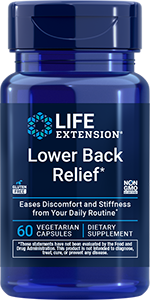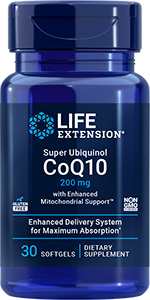
Newsletter
Newsletter
Clinical Trial Findings Support the Use of Orally Administered Sun Protection

An eight-week clinical trial found a protective benefit for an orally administered combination of red orange and fern extracts against the effects of damaging ultraviolet light. The nutrients could be used along with topically applied sunscreens to increase protection from excess sun exposure.
“While conventional photoprotection strategies—like using sunscreens, protective clothing, and limiting sun exposure—are essential, they have limitations, including inconsistent application, frequent reapplication requirements, and photostability issues, all of which contribute to suboptimal protection in real-world use,” the authors of the report wrote. “Given these limitations, recent studies highlight the benefits of oral photoprotection.”
At the beginning of the trial, and at two and eight weeks, participants were exposed to ultraviolet B (UVB) rays on their lower backs and the minimal dose of UV needed to cause redness was determined. In comparison with measurements obtained at the beginning of the trial, participants who received fern plus red orange showed an increase of 23.8% in the minimal dose of UVB radiation needed to produce skin redness and a 46.2% reduction in redness intensity (measured 24 hours following irradiation) at the end of the trial. The placebo group showed no significant effects. There were no differences in skin pigmentation observed between treatment and placebo groups at two weeks and at the end of the eight-week study, which indicates that the nutrient combination will not affect tanning response and that its benefits are not dependent upon the protective effects of melanin.
The randomized, double-blind, placebo-controlled trial included 27 men and women who received a combination of Polypodium leucotomos fern extract and red orange extract along with vitamins A, C, D and E, and 25 participants who received a placebo to be consumed daily for eight weeks.
The benefits of the nutrients were significant at eight weeks, which emphasizes the importance of sustained use. “This study supports oral supplementation as an adjunct to topical photoprotection, with prolonged use potentially yielding cumulative benefits,” the authors concluded.
The findings were reported April 2, 2025, in the journal Nutrients.1
Products
Apply What You've Learned: Sun Protection
- While sunlight exposure lifts mood and stimulates vitamin D formation in the skin, too much exposure results in damage that leads to a prematurely aged appearance and increases the risk of skin cancers. The American Academy of Dermatology recommends against relying on sun exposure or tanning beds to obtain vitamin D.2 Blood testing can assist in determining how much vitamin D needs to be added to the diet.
- Use sunscreen with a sun protection factor (SPF) of 30 or higher that protects against both ultraviolet A (UVA) and ultraviolet B (UVB) rays. This should be used year-round.
- Topical sunscreen should be applied 15 minutes before going outside during daylight, since it takes time for sunscreen to be absorbed into the skin. Reapply sunscreen every two hours after swimming or engaging in vigorous activity that induces perspiration.3
- Although sunscreen applied to the skin filters UV light, the skin is still subject to damage. Using orally administered skin-protective nutrients provides exposed skin with additional defense.
References
- Keršmanc P, Pogacnik T, Žmitek J et al. Effects of eight-week supplementation containing red orange and Polypodium leucotomos extracts on UVB-induced skin responses: a randomized double-blind placebo-controlled trial. Nutrients. 2025 Apr 2;17(7):1240. doi: 10.3390/nu17071240.
- Vitamin D Stats and facts. American Academy of Dermatology. 2025 Feb 11. https://www.aad.org/media/stats-vitamin-d
- Sunscreen FAQs. American Academy of Dermatology. 2025 Feb 11. https://www.aad.org/media/stats-sunscreen.
Related Life Extension Magazine® Articles

More Complete Sun Protection
A clinical study found that an oral fern extract protected the skin from photo-aging and decreased UV-radiation-induced DNA mutations by 84%.

Sun Protection from the Inside Out
Research has identified oral compounds that provide additional protection against solar radiation. In a clinical study, one of these nutrients decreased UV-driven DNA mutations by 84%.
Highlight
LE Live
Join Life Extension’s Dr. Mike and Dr. Crystal live each week as they answer fan questions about the latest health trends. Recent topics include food cravings, complementary nutrients, vitamin K, creatine, histamine intolerance and more!
Watch NowLife Extension Magazine® Issue Now Online
A remarkable number of healthy-longevity findings have been published over the past 18 months.



